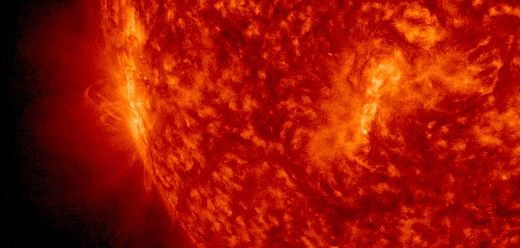Only 6 days in and 2023 has its first X-Class Solar Flare! The Newly-emerging sunspot AR 3182 popped off an X1.2 flare in the early morning hours of Jan 6, see the GOES XRay graph below On January 3 the sunspot group blasted off a warning with a probable X-Class Flare with a giant eruption on the far side of the sun, the magnetic storm from the blast will miss planet Earth. See Giff below. As you can see on Solar Dynamics Observatory Giff above, sunspot AR3182 has now edged itself onto the Earth-facing side of the Sun. NOAA is forecasting a 10% chance of more X-Class flares in the next 24 hours as the monster sunspot group turns further toward Earth. According to Spaceweather.com a pulse of X-rays and extreme UV radiation from the flare ionized the top of Earth's atmosphere, causing a shortwave radio blackout across South Pacific. And of course with high activity on our Star, we can expect an uptick in seismic activity here on Earth. . . As you can clearly see Solar Cycle 25 monthly values are far exceeding the predicted numbers. Scientists predicted that Solar Cycle 25 in December 2019 would be similar to solar cycle 24, with the preceding solar cycle minimum in April 2020 (± 6 months), and the number of sunspots reaching a (smoothed) maximum of 115 in July 2025 (± 8 months). This prediction is in line with the current general agreement in the scientific literature, which holds that solar cycle 25 will be weaker than average (i.e. weaker than during the exceptionally strong Modern Maximum). However, as you can see above, observations from 2020 to 2022, the first three years of the cycle, significantly exceed predicted values. Even so, we have to back to October 2022 since the last X-Class flare was unleashed from the Earth-facing side of the Sun, see the graph below. |
Friday, 6 January 2023
Only 6 days in and 2023 has its first X-Class Solar Flare! The Newly-emerging sunspot AR 3182 popped off an X1.2 flare It comes just 3 after the monster sunspot group probably fired off another X-Class flare on the far side of our Sun! We can expect an uptick in seismic activity here on Earth. . .
Subscribe to:
Post Comments (Atom)





No comments:
Post a Comment